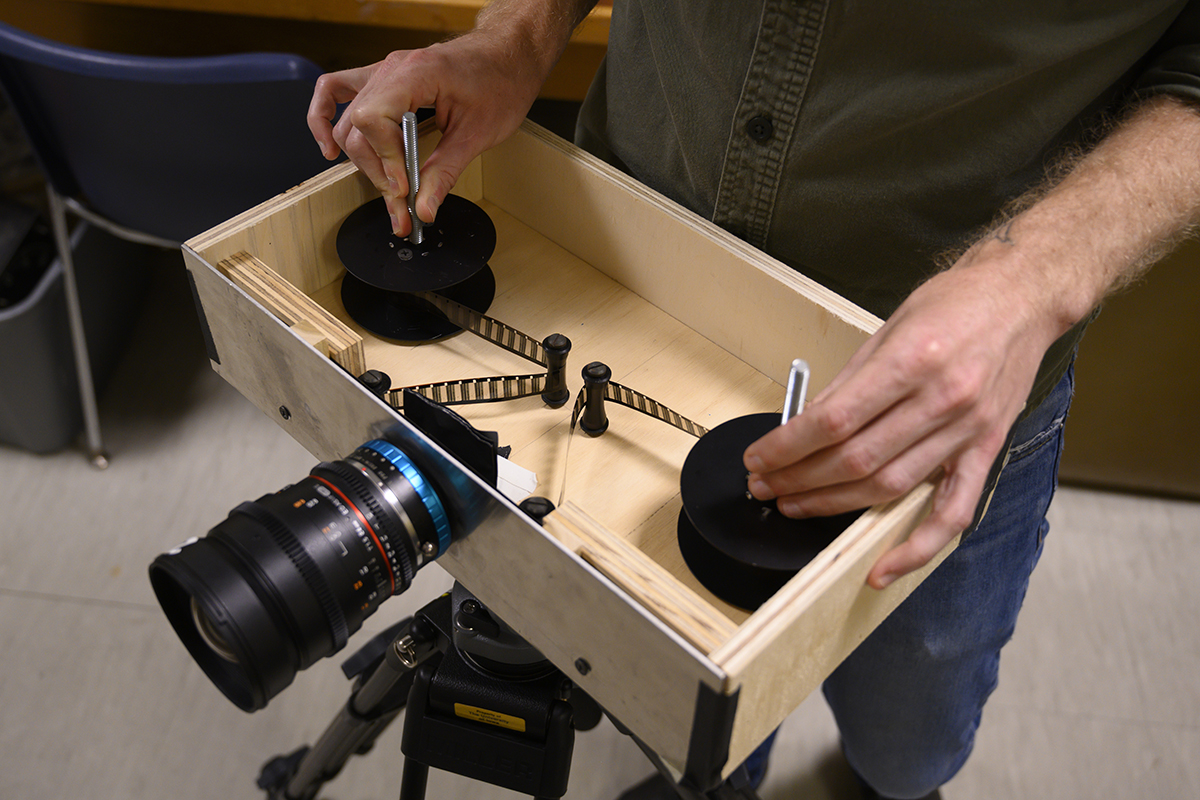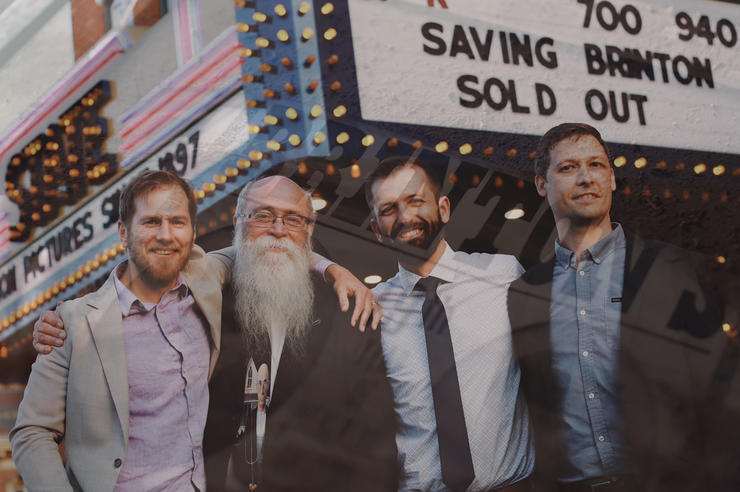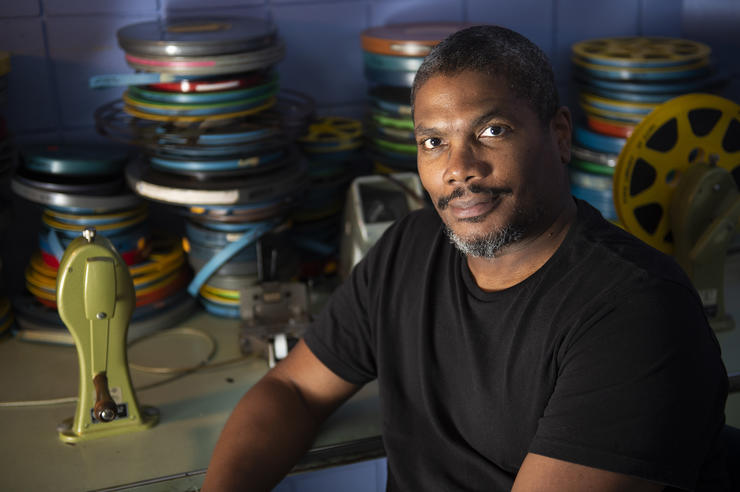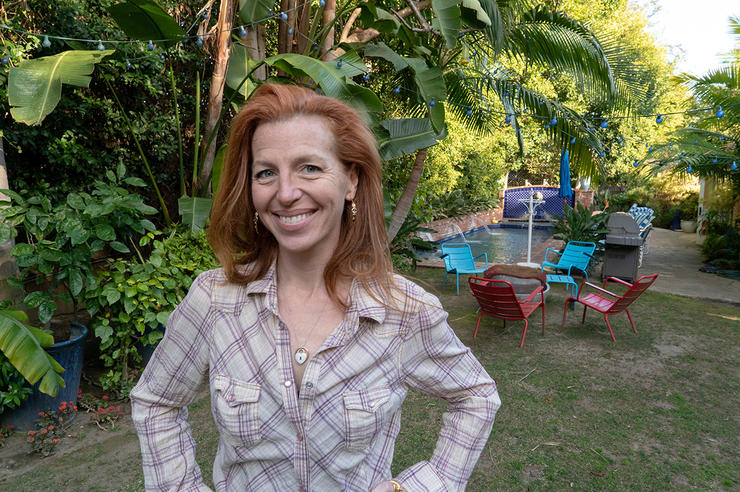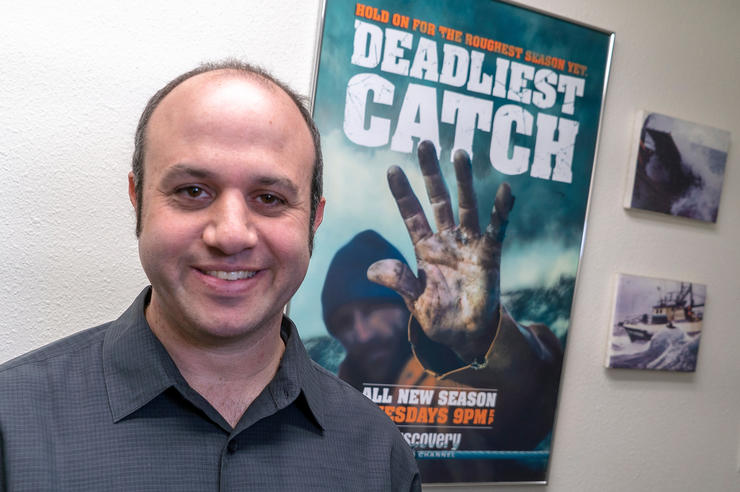Prestigious film fest puts spotlight on Hawkeye’s work
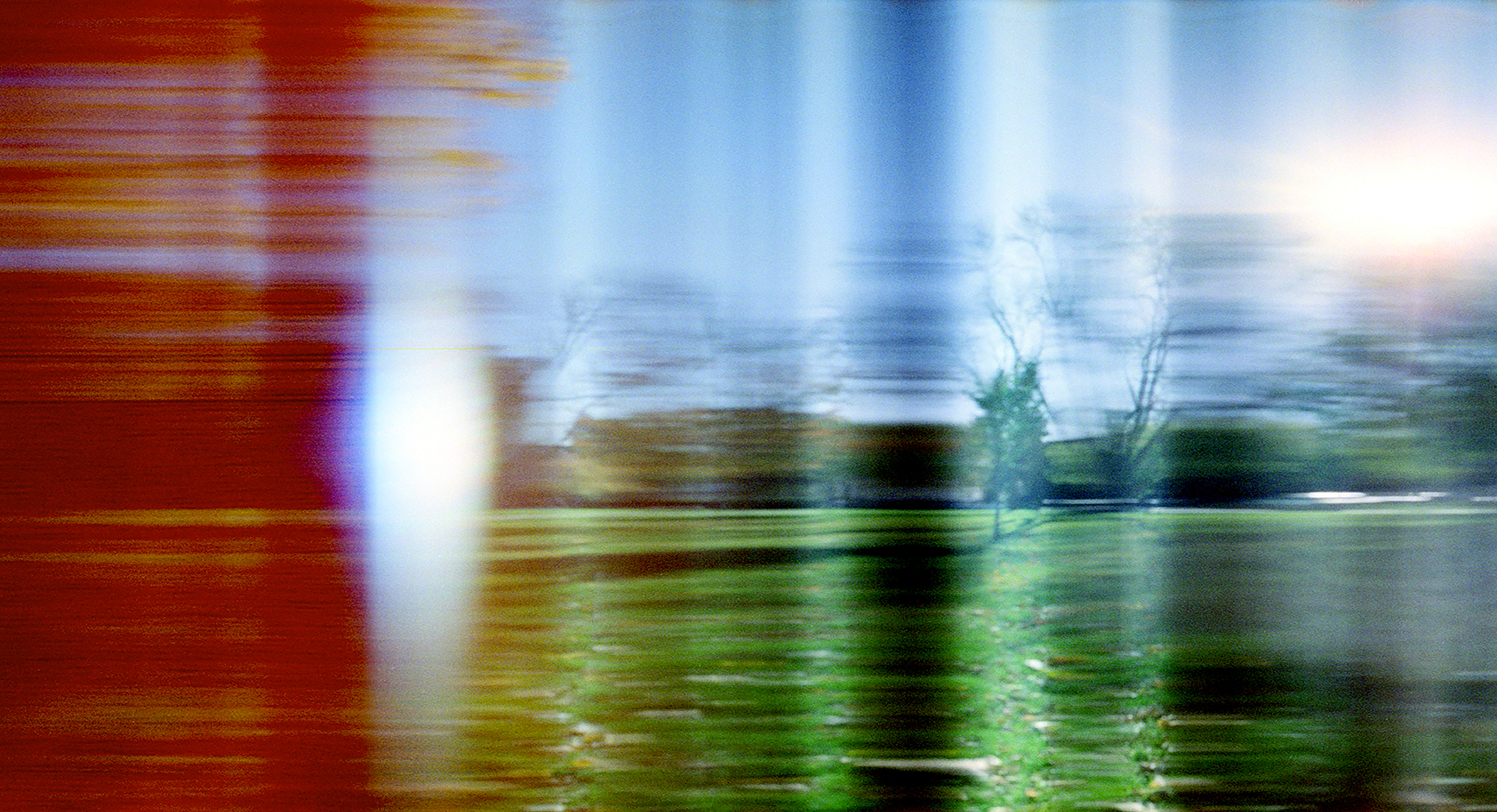
A still image from Slow Volumes, a film by University of Iowa assistant professor Michael Gibisser. The film recently premiered at the 2019 Toronto International Film Festival; the festival program says the short film “pushes familiar spaces into abstraction in a Michael Snow-esque experiment that bends cinematic space and time.”
Among the 333 films screened during the 11-day run of the 2019 Toronto International Film Festival (TIFF) was the world premiere of Slow Volumes, a short film by Michael Gibisser, assistant professor in the University of Iowa Department of Cinematic Arts.
The four minute, 40 second film shot using a custom-built 35mm camera was part of TIFF’s avant-garde showcase, Wavelengths. According to the festival program, Slow Volumes “pushes familiar spaces into abstraction in a Michael Snow-esque experiment that bends cinematic space and time.”
“I was thrilled,” Gibisser says of being invited to the festival, one of the largest and most prestigious in the world. “The Wavelengths program was really thoughtfully curated. All of the films in the Wavelengths 1 shorts program dealt with breaking binaries of various forms, and in my film, this had to do with stillness and movement. Each film brought out the themes of others. And the festival as a whole was great. It has a fair-like atmosphere in that it takes over downtown and shuts down King Street.”
Gibisser has been making films in one form or another since high school, when he says he and his friends realized they could make videos for assignments instead of writing papers.
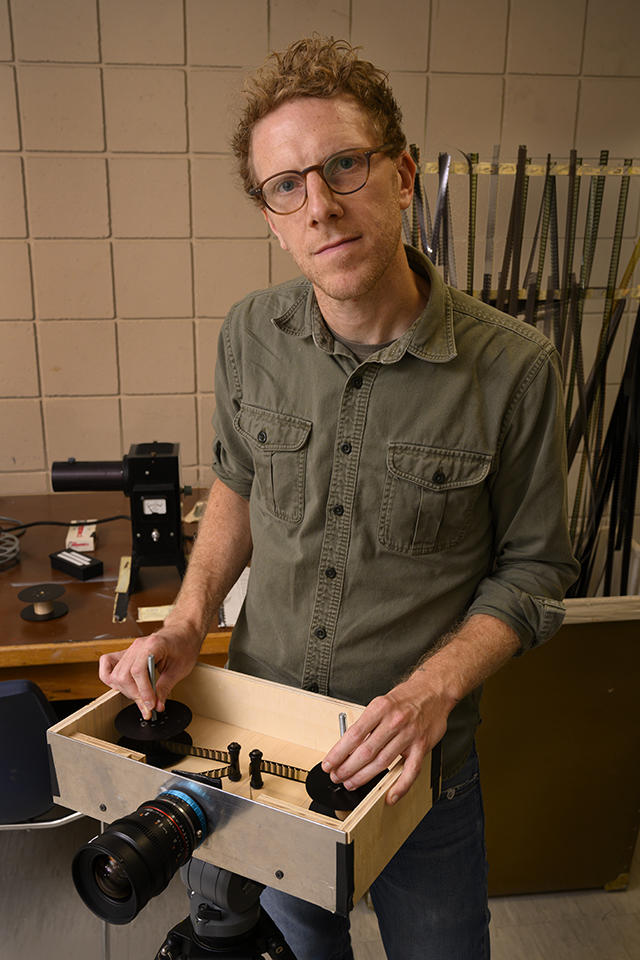
Michael Gibisser, assistant professor in the University of Iowa Department of Cinematic Arts, shot Slow Volumes using a custom-built 35mm camera that uses slit scan photography technique. “This mechanism really disorients how we think about the stability of photography in representing an area of space in time. Slow Volumes was an attempt to play around with this alternative way of making imagery.”
“It probably ended up taking up more effort, but at the time, it was preferable to writing,” Gibisser says. “And it stuck.”
Gibisser says his interests changed during his time as an undergrad at Emerson College in Boston, Massachusetts, “where I arrived thinking I was going to make heist films.” While Gibisser was struggling with his thesis, his adviser suggested he put it aside for a bit.
“I made another film quickly that was weird and instinctual, and it probably came out better than my thesis film did,” Gibisser says. “It taught me to follow my instincts and not try to make films that fit a mold I wasn’t interested in.”
He continued working in experimental documentary and essayistic film while earning his MA and MFA from the School of the Art Institute of Chicago and the University of Illinois at Chicago, respectively. During this time, he read about and became interested in slit scan photography.
This technique, perhaps best known for being used to determine the outcome of races, uses a sheet of film moving past a slit. While regular cameras hold the celluloid still during exposure, illuminating the entire film frame at once, slit scan photography restricts the aperture—or opening through which light travels—to a thin sliver of the frame. The film then moves continuously past the aperture and the images are uniquely captured depending on how, and the speed with which, they move past the lens.
“I was interested that this mechanism exposes what is essentially a 100-foot-long still photograph. It doesn’t have the motion we are used to in a film,” Gibisser says. “It’s a single image, but also a single image that contains quite a lot of time, because it takes about 15 minutes to expose a roll. It also really disorients how we think about the stability of photography in representing an area of space in time. Slow Volumes was an attempt to play around with this alternative way of making imagery.”
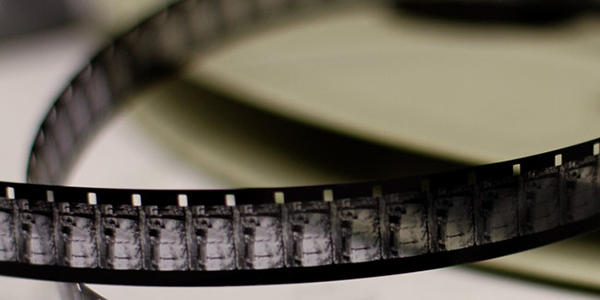
The University of Iowa Department of Cinematic Arts provides students with the critical tools necessary for the theoretical and historical analysis of cinema as well as the creative skills required for the production of film, video, and digital media.
Gibisser worked with Hannah Givler, a lecturer in 3-D design in Iowa’s School of Art and Art History, to design the camera used to film Slow Volumes. They sourced spare 35mm projector parts from the Chicago Film Society, and he and Givler worked with the Engineering Machine Shop to accurately cut a lens mount into an aluminum plate. The camera is designed to allow the user to hand-roll the film past the aperture.
Slow Volumes opens with a screen full of abstract bands of color.
“You slowly come to realize the abstract bands are common spaces—in this case my living room and College Green Park,” Gibisser says. “But because they are still, they just become this flux of color and light. Think about what the world would look like if we collapsed your view to an impossibly narrow slit. As you turn your head, you would just see a series of colors followed by a series of colors followed by a series of colors. It’s only when things move past the camera or the camera spins do you see these bursts of imagery.”
Gibisser’s film was influenced, in part, by Michael Snow’s work, especially the landmark film Wavelength, after which the TIFF program is named. In fact, Slow Volumes almost included an Easter egg of the 1967 film.
“I was trying to decide what to have playing on the television in the background of the living room, and for a while it was Wavelength,” Gibisser says. “However, it eventually became footage from the park segment.”
Obermann Interdisciplinary Research Grants (IDRG) foster collaborative scholarship and creative work by offering recipients the time and space to exchange new ideas leading to invention, creation, and publication. IDRG groups work at the Obermann Center for two or four weeks, usually in July and/or August.
After the premiere of Slow Volumes, Gibisser participated in a Q&A with other filmmakers. He says he hopes his film was well-received by the TIFF audience, and he was happy some viewers picked up on the inspirations and historical references.
Gibisser is now focusing on his new project, currently titled Achoques, a hybrid documentary film and multimedia online project he is making with fellow filmmaker Mary Helena Clark that explores themes of transformation, alchemy, regeneration, contamination, and interdependence through the lens of the Lake Pátzcuaro salamander (known locally as “achoque”) and the group of nuns who are keeping the species alive. The two received a 2019 Interdisciplinary Research Grant and spent part of the summer shooting in Mexico as well as working together in residence at the Obermann Center for Advanced Studies.
Meanwhile, Gibisser hopes to help his students find their voice just as his professors did for him. He encourages them to push boundaries, explore different techniques in filmmaking or image-making, and to think beyond what is traditionally believed to make a successful film.
“I want them to tell their own stories, and in ways that push the form forward,” Gibisser says.
